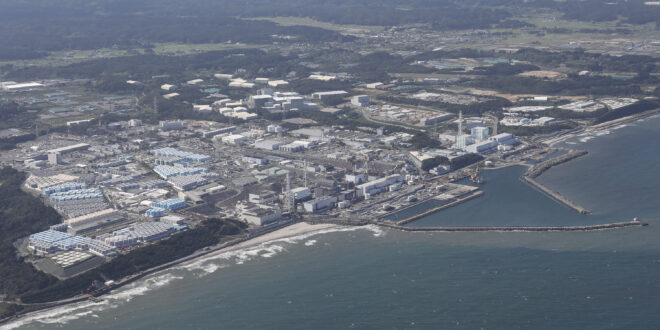by Suri Zheng
Japan has faced a daunting and highly controversial environmental challenge in recent years, one that has captured the world’s attention – the management and release of nuclear wastewater from the Fukushima Daiichi Nuclear Power Plant. The plant suffered a catastrophic meltdown in 2011, leading to the accumulation of vast quantities of radioactive water. The Japanese government’s decision to release this treated wastewater into the Pacific Ocean has sparked a global debate, raising concerns about the environmental, health, and political ramifications of such a move.
The Fukushima Daiichi Nuclear Power Plant’s triple meltdown in 2011 was a significant disaster that resulted from a massive earthquake and tsunami. The disaster not only led to the release of radioactive materials into the environment but also left behind a substantial amount of radioactive water. This water is the result of a continuous process of cooling the damaged reactors and groundwater infiltration into the facility.
Since the Fukushima disaster, the plant’s operators have implemented various measures to cool the damaged reactors, which has resulted in the generation of immense amounts of radioactive water. This water has been stored in tanks on-site, and the volume continues to increase. The water also becomes contaminated through contact with the damaged reactor cores and the surrounding environment. Consequently, the need to manage this radioactive water has become increasingly urgent.
The Japanese government and plant operators have been treating the contaminated water to reduce its radioactivity. The process primarily involves removing radioactive isotopes from the water to make it safer for release. This treatment has made significant progress in reducing most radioactive contaminants. However, the removal of tritium, a radioactive isotope of hydrogen, remains a challenge. Tritium is difficult to separate from water molecules, and its release into the environment is a subject of concern.
The Japanese government and plant operators have explored various options for managing the treated radioactive water. They considered methods such as evaporating the water, building more storage tanks, or releasing it into the ocean. The decision to release the treated water into the Pacific Ocean has been met with mixed reactions.
The proposal to discharge treated radioactive water into the Pacific Ocean has sparked fierce opposition both domestically and internationally. Critics argue that this could harm marine ecosystems and human health. There are concerns about the potential accumulation of radioactive isotopes in marine life and their entry into the food chain. Fishermen and local communities in Japan have expressed concerns about the impact on their livelihoods and the reputation of seafood from the region. Internationally, countries in the Pacific rim have voiced their reservations about the potential transboundary impact of Japan’s decision.
A critical aspect of the controversy surrounding Japanese nuclear wastewater is the perceived lack of transparency and accountability in the decision-making process. Stakeholders, including local residents, environmental activists, and neighboring countries, have called for more detailed information and international involvement in the decision-making process. They argue that an issue of such global significance necessitates a more inclusive approach.
In summary, the management and release of Japanese nuclear wastewater is an intricate and multifaceted challenge that demands careful consideration of environmental, health, and political implications. The Fukushima Daiichi Nuclear Power Plant disaster has left Japan with a significant and ongoing problem, and the decision to release treated water into the Pacific Ocean has generated intense debate. The key to resolving this issue lies in a transparent, inclusive, and informed decision-making process that balances the urgent need to manage radioactive water with concerns about its potential environmental and health impacts. The world will be closely watching how Japan addresses this complex environmental challenge and navigates the intricate waters of nuclear waste management.
 Tempus Magazine By Students, For Students
Tempus Magazine By Students, For Students 



